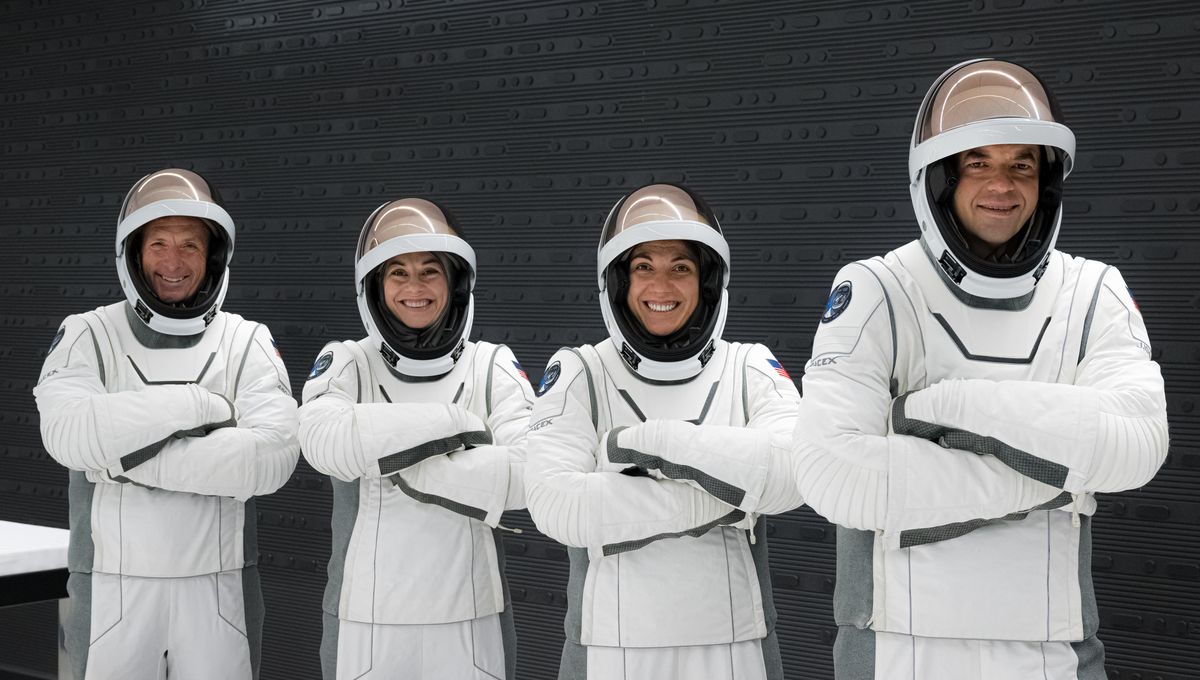
The first mission of the Polaris Program, called Polaris Dawn, will fly tomorrow from Kennedy Space Center in Florida. This is a commercial mission, but it is not a simple joyride into space – it will conduct scientific research and break a few records in its five days or so in orbit.
The mission is operated by SpaceX on behalf of Jared Isaacman, who leads the Polaris program and will command the mission. He will be joined in space by pilot Scott Poteet, mission specialist Sarah Gillis, and mission specialist and medical officer Anna Menon.
The launch window opens tomorrow – August 27, 2024, at 07:38 UTC – which is the middle of the night for the US. So, night owls or very early risers, you can watch the launch on Twitter.
Boldly Going Where No Woman Has Gone Before
After launch, if the SpaceX Dragon Capsule has sustained no damage, the capsule will fire again and travel into a highly elliptical orbit. If all goes well, it will reach 1,400 kilometers (870 miles) away from Earth. This is the furthest humans have traveled since NASA’s Apollo Program.
It will also be the furthest humans have been in orbit around the Earth, going a few tens of kilometers further than Gemini 11. At the apogee, Gillis and Menon will break the record for how far women have been from Earth.
First Private Space Walk And Other Records
A lot of focus will be on day two. At that point, the spacecraft will reach cruising orbit about 750 kilometers (470 miles) from Earth and the team will depressurize the crew dragon capsule and perform the first-ever extravehicular activity on a commercial spaceflight mission. All four crew members will have to don specially designed suits since the crew dragon has no airlock.
Only Isaacman and Gillis will be out of the vehicle – but the four of them in total will make up the highest number of humans in the vacuum of space. The previous record holder was the crew of Apollo 15 when Al Worden performed an EVA to retrieve film cassettes from the two Moon-mapping cameras. Still, one of Worden’s records will hold. His EVA was 321,869 kilometers (200,000 miles) from Earth. Polaris Dawn will be the second furthest from Earth.
Better Understanding Of Human Health In Space And On Earth
The mission will conduct several medical analyses on the crew, in particular studying decompression sickness. The depressurization will also be an excellent time to study Spaceflight Associated Neuro-Ocular Syndrome (SANS), a key risk to human health in long-duration spaceflight.
The mission will fly to the Van Allen radiation belt, so it will also be an opportunity to study what space radiation does to the human body, something that will be useful for future longer-term flight beyond the magnetosphere of the Earth. The team is collaborating with multiple universities and health institutions on this and more work.
The mission is expected to return on Sunday, September 1, splashing down in either the Atlantic Ocean or the Gulf of Mexico
Source Link: Polaris Dawn Is About To Attempt The First-Ever Civilian Spacewalk